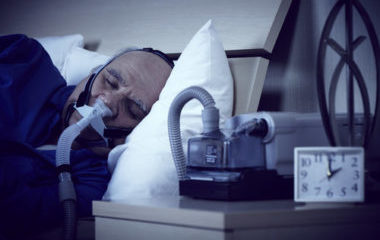The U.S. Food and Drug Administration (FDA) has issued a final rule, “Classification of the Positive Airway Pressure Delivery System,” effective Oct. 19, 2018, that reclassifies the positive airway pressure (PAP) delivery system, moving it from Class III into Class II. PAP delivery systems continue to be for prescription use only.
The FDA generally classifies medical devices based on the risks associated with the device and by evaluating the amount of regulation that provides a reasonable assurance of the device’s safety and effectiveness. Class I devices generally pose the lowest risk to the patient, and Class III devices pose the highest risk. The primary purpose of reclassification is to apply the appropriate level of regulatory controls for a device type based on the most current information regarding its safety and effectiveness.
All devices, including PAP delivery systems, that were not in commercial distribution before May 28, 1976, are automatically classified as, and remain within, Class III and require premarket approval unless and until FDA takes an action to classify or reclassify the device. The PAP reclassification came after the FDA received a request for de novo classification from FRESCA Medical for the CURVE PAP system. However, reclassification is applied to a particular device type and not an individual device.The FDA determined that the PAP delivery system can be classified into Class II with the establishment of special controls, which will provide reasonable assurance of the safety and effectiveness of the device.
The FDA believes that placing the PAP device into a lower device class will enhance patients’ access to beneficial innovation, in part by reducing regulatory burdens. The special controls stipulated by the FDA for the reclassification of the PAP delivery system to Class II are:
- The patient-contacting components of the device must be demonstrated to be biocompatible.
- Non-clinical performance testing must demonstrate that the device performs as intended under anticipated conditions of use, including the following:
- Waveform testing must simulate breathing conditions and evaluate pressure and airflow response over a range and combination of high and low breath rates and tidal volumes.
- Use life testing must demonstrate adequate device performance over the labeled use life of the device.
- Device integrity testing must demonstrate that the device can withstand typical forces expected during use.
- Carbon dioxide rebreathing testing must be performed.
- System flow rate, maximum expiratory pressure, inhalation pressure, and intra-mask static pressure testing must be performed.
- Air bolus testing must demonstrate that the device can withstand worst-case scenario air pressures.
- Maximum limited pressure testing of the flow generator in single fault condition must be performed.
- Maximum output temperature testing of delivered gas, if humidified, must be performed.
- Performance data must validate reprocessing instructions for any reusable components of the device.
- Performance data must demonstrate the electrical, thermal, and mechanical safety and the electromagnetic compatibility of the device.
- Software verification, validation, and hazard analysis must be performed.
- Labeling must include the following:
- Therapy pressure range;
- Use life and replacement schedule for all components;
- Cleaning instructions; and
- Instructions for assembly and connection of device components.
According to the FDA rule, a PAP delivery system “is a prescription noninvasive ventilatory device that delivers expiratory positive airway pressure for patients suffering from obstructive sleep apnea. The system also provides positive airway pressure during incipient apnea. The system may include a dedicated flow generator and a patient interface.”





